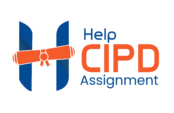5HR01 Employment Relationship Management Assignment Guideline Task One
- February 23, 2022
- Posted by: admin
- Category: CIPD Level 5

Table of Contents
An introduction to 5HR01 Employment Relationship Management
In this unit, you will learn how to enhance positive relationships in the workplace. Identifying how far professionals champion better working lives to improve employee and organizational performance is influenced by this factor. This unit distinguishes between employee participation, employee involvement, and employee involvement in promoting performance. There will be an emphasis on employee voice and engagement, conflict resolution, managing performance, grievances, and disciplinary matters, and of course, the concept of employee bodies in employee relations.
Guidelines for Assignment Task One
The following section provides guidelines for answering the assignment questions. An evaluation of Evergreen International, a UK-based multinational corporation with subsidiaries in different countries, forms the basis of the assignment. Local employees were dissatisfied with their job, while experts were unhappy and discontent with their lives. In addition, students will develop a guidance document for senior managers regarding employment-related issues in a senior people practice manager.
AC 1.1 Analyzing emerging developments to inform engagement and voice strategies for employees.
Directives
Students define engagement and explain the concept of employee voice from a CIPD perspective. The indicative content explains what has changed with employee voice and engagement, such as leadership, voice, integrity, and the use of social media to drive engagement and the use of employee engagement surveys.
Identifying alternatives for building better working lives for all employees involves understanding the links between engagement, employee voice, and employee wellbeing. People professionals should use the concept of employee voice to identify the best methods of addressing and managing employee issues. In addition, students discuss the impact of employee voice and engagement on job quality and performance.
As learners review their answers, they should link their answers to the case study and suggest how local employees can work with experts to improve job quality and employee satisfaction.
AC 1.2 Explains and evaluates the difference between employee involvement and employee participation and how they can be used to build relationships.
Directives
Learners define the involvement and participation of employees. In this assessment, we examine the differences in depth and decision-making when involving employees and creating platforms for participation.
Using utilitarianism and pluralism theories, learners link participation and involvement in employee relationships. It may be possible to explain other job design theories to help provide a comprehensive explanation of how involvement and participation build relationships between employees and employers.
AC 1.3 Identifying employee voice tools and approaches to engage employees
Directives
Based on the answer, you are evaluating one of the following tools:-
- Surveys
- Team meetings
- Suggestion schemes
- Joint negotiation committees
- Collective bargaining
- Employee forums
- Social media
Furthermore, learners should discuss either of the following engagement drivers:
- Engaging managers
- Leadership engagement
- Voice and integrity
- Organization culture
- Rewards and recognition
AC 1.4 An assessment of the interrelationships between employee voice and organizational performance
Directives
Based on the high-performance work practices elements, the assessment criteria question whether employee voice contributes to performance. The practices relate to the selection, hiring, development, and retention of employees and the role of people professionals in these activities. They describe senior managers’ role in ensuring that local employees and experts are informed and engaged to perform as expected at Evergreen. It improves work performance to focus on the people within an organization and talk about the plights and challenges they face.
AC 1.5 – A description of the concept of better working lives and how this can be designed
Directives
For employees to live better working lives, management and people must create good work. Good work quality depends on how employers and managers treat their employees. To design better working lives, employers focus on the quality of work for their employees based on their terms of employment and their health and safety. They also provide social support for their workers.
To have a fulfilling working life, employers are responsible for providing their workers with flexible work schedules. Employers must respond to employees’ concerns and assess how to improve their wellbeing to be flexible. Improved working conditions improve employees’ physical and mental health conditions, and learners should link these improvements to the needs of Evergreen International’s employees.
AC 3.1 Explains the principles of unfair dismissal law concerning capability and misconduct.
Directives
In light of this question, it is helpful to focus on the concepts of unfair dismissal law and the legislation and codes of practice that guide people professionals in making decisions about dismissals.
Students explain the difference between capability and misconduct. Employee capability refers to the employee’s ability to perform according to expectations. If there is no alternative position available for an injured employee, he may be dismissed based on capability. An employee’s conduct affects the organization and other people negatively when they are misbehaving. For example, an employee who engages in fraud activities at work is subject to dismissal for misconduct.
AC 3.2 An analysis of the leading causes of employee grievances
Directives
Disagreements and disputes between employers and employees are called grievances. The following are grievance causes:
- Poor management
- Lack of workplace flexibility
- Unfair employee treatment
- Unfair work rules
- Poor working conditions
- Bullying and harassment
AC 3.3 Explain the skills required for handling grievances and discipline effectively.
Directives
Students describe professionals’ skills in handling grievances and disciplining staff. Some examples are:
- Good listening skills
- Good investigation skills
- Good interviewing skills
- Effectiveness in note-taking
- Ability to acknowledge and minimize bias
- Individual capability to be objective
AC 3.4 Guidance on dealing with grievances effectively
Directives
Organizations and employees alike benefit from handling grievances well. There are several benefits of handling grievances effectively.
- Reduces legal claims
- Builds a positive reputation for the organization
- Managing employee frustrations
In addition, learners describe the consequences of not handling grievances effectively, including;-
- Employee morale is low
- A rise in resignations
- A rise in absenteeism at work
- Resistance to change among employees
- Employee withdraws.
The ACAS Code of Practice provides guidelines regarding practitioners’ procedures when handling grievances and discipline issues.
As part of the Associate Diploma in People Management, an assessment is required to complete the 5HR01 unit.
Must Read:


